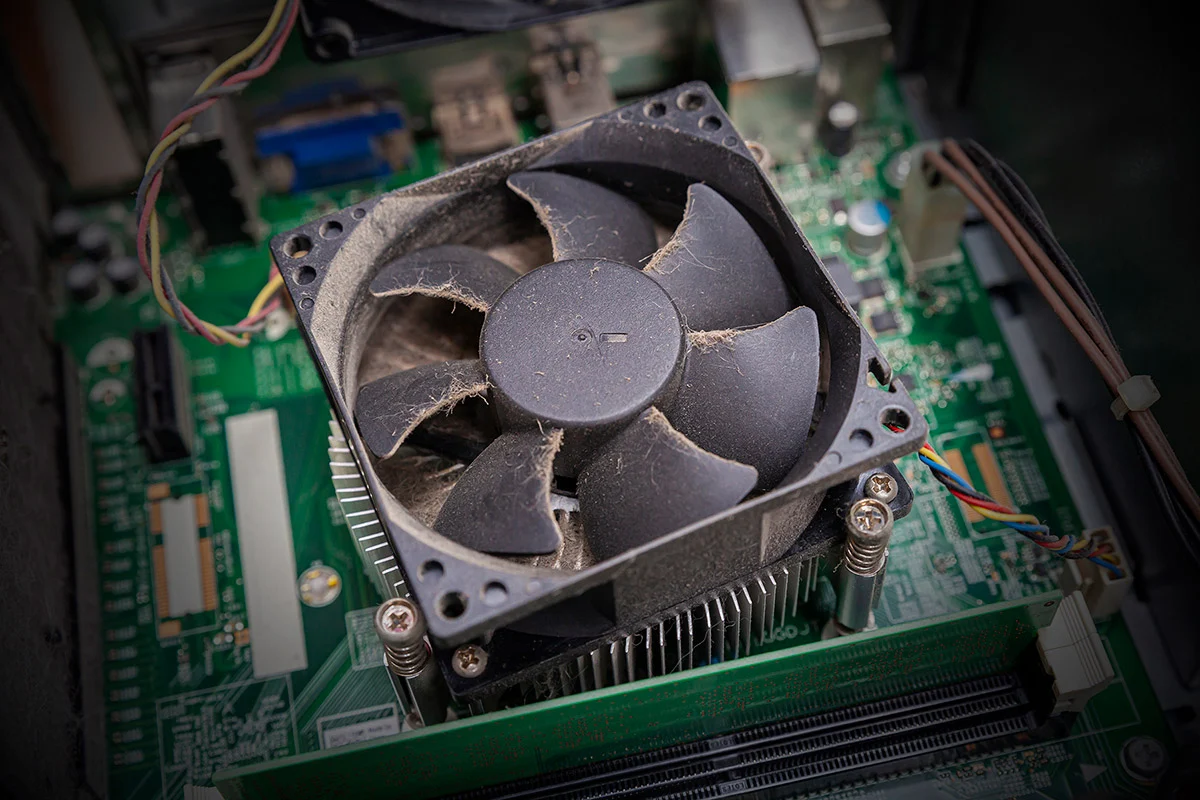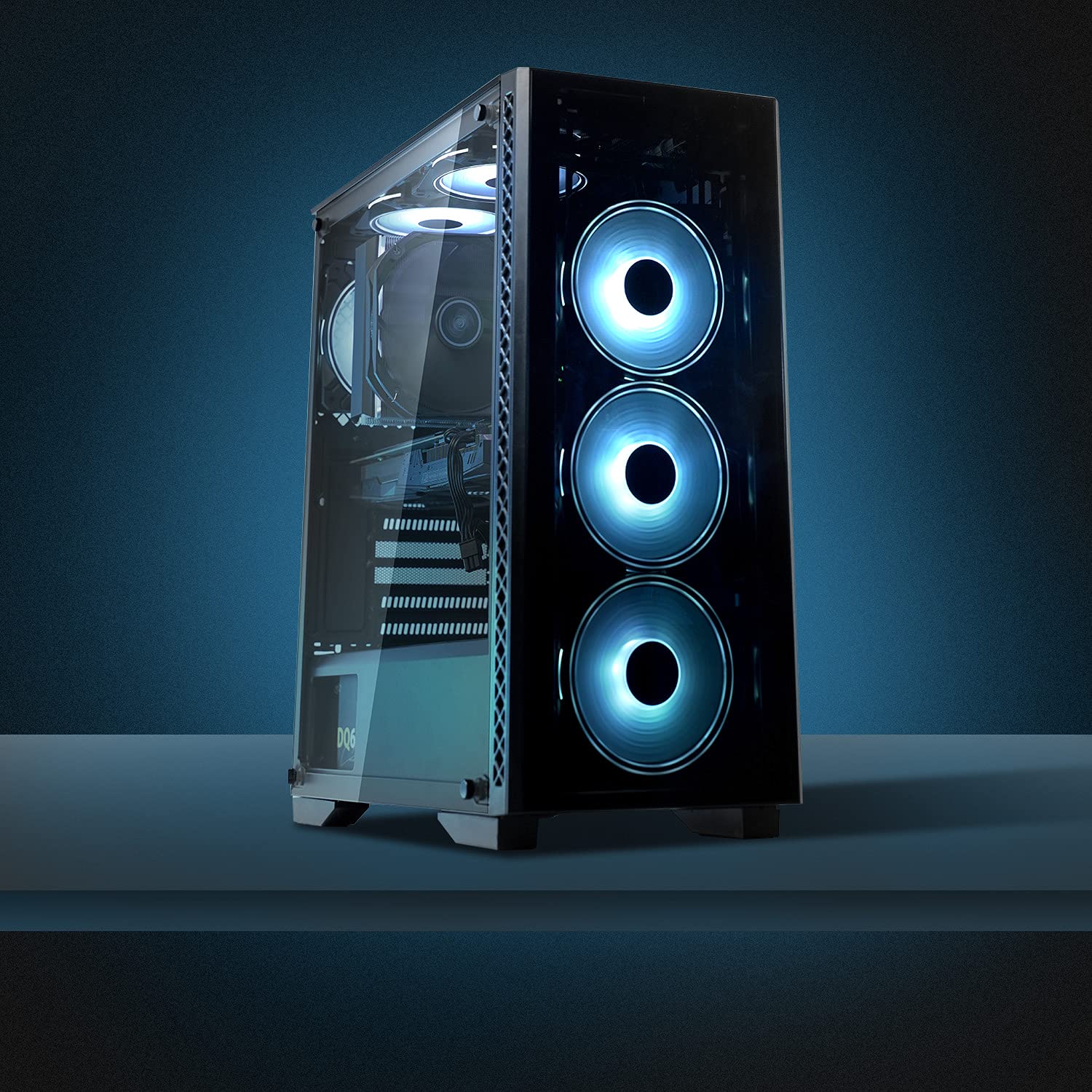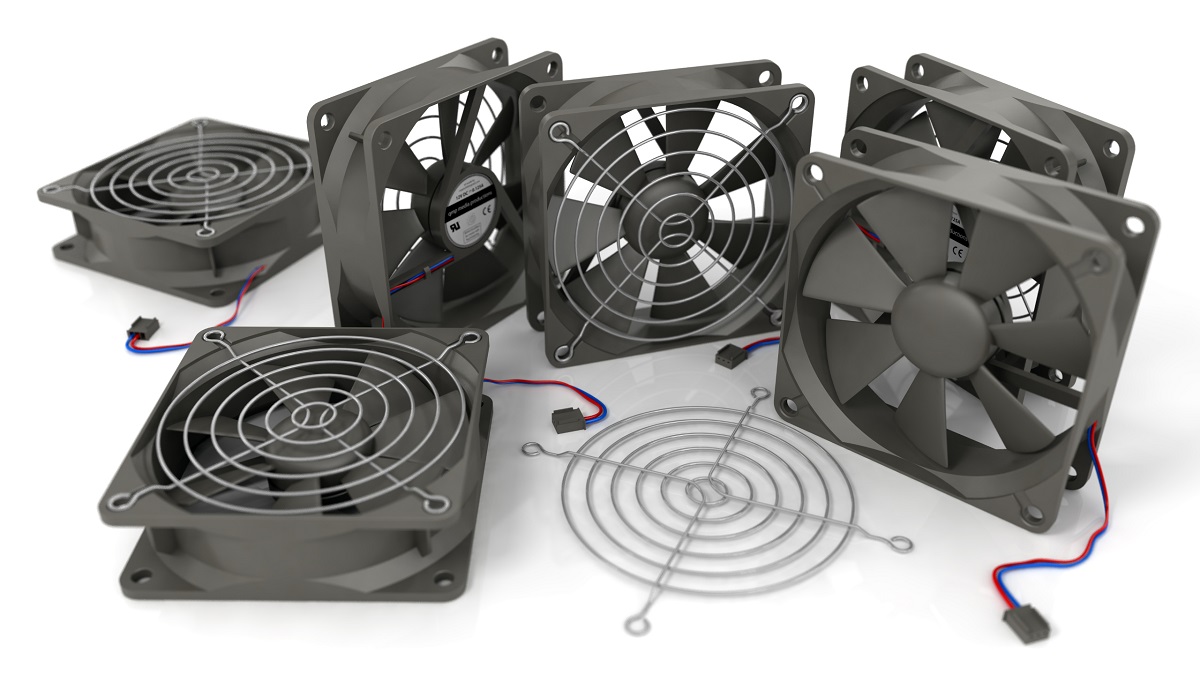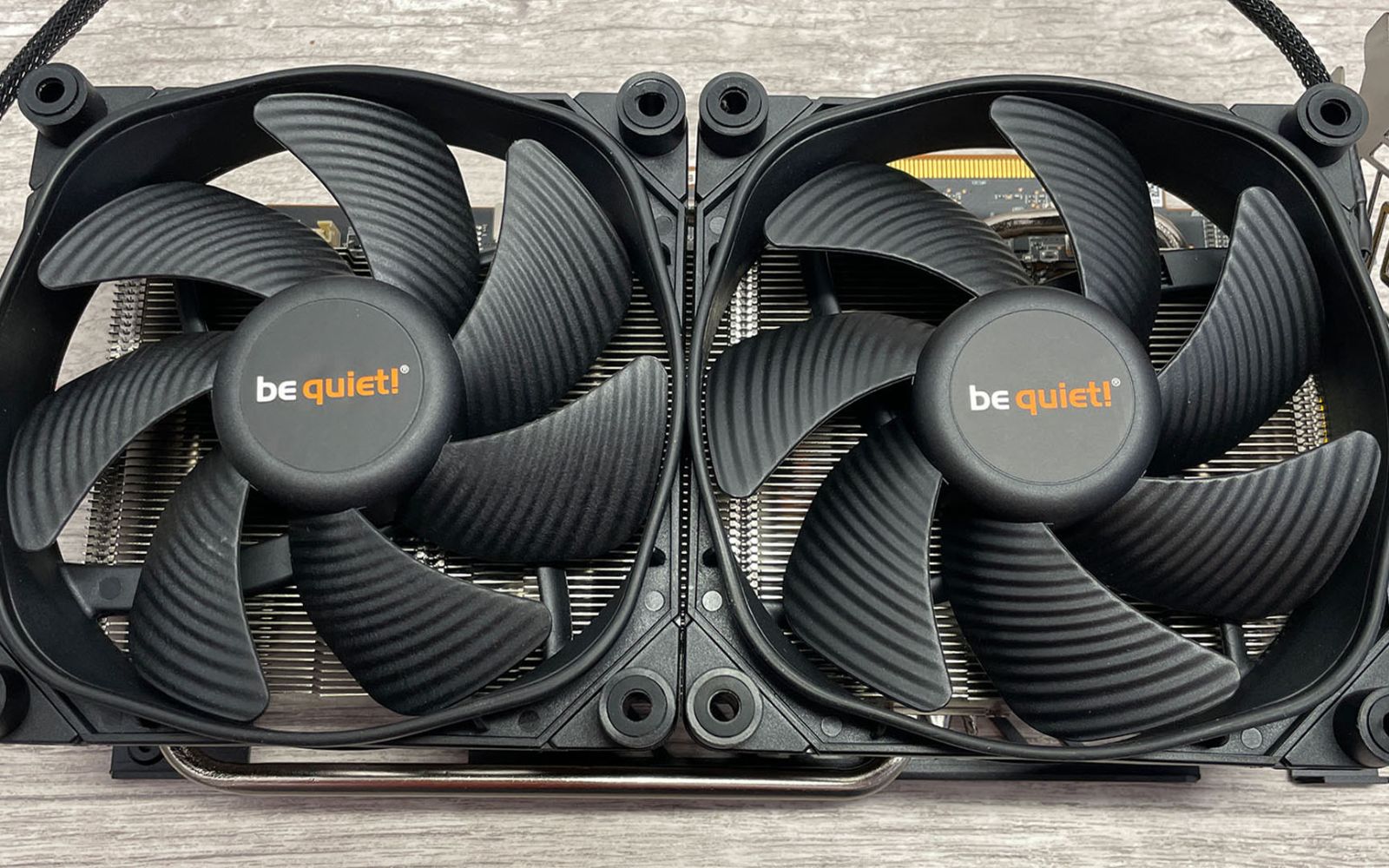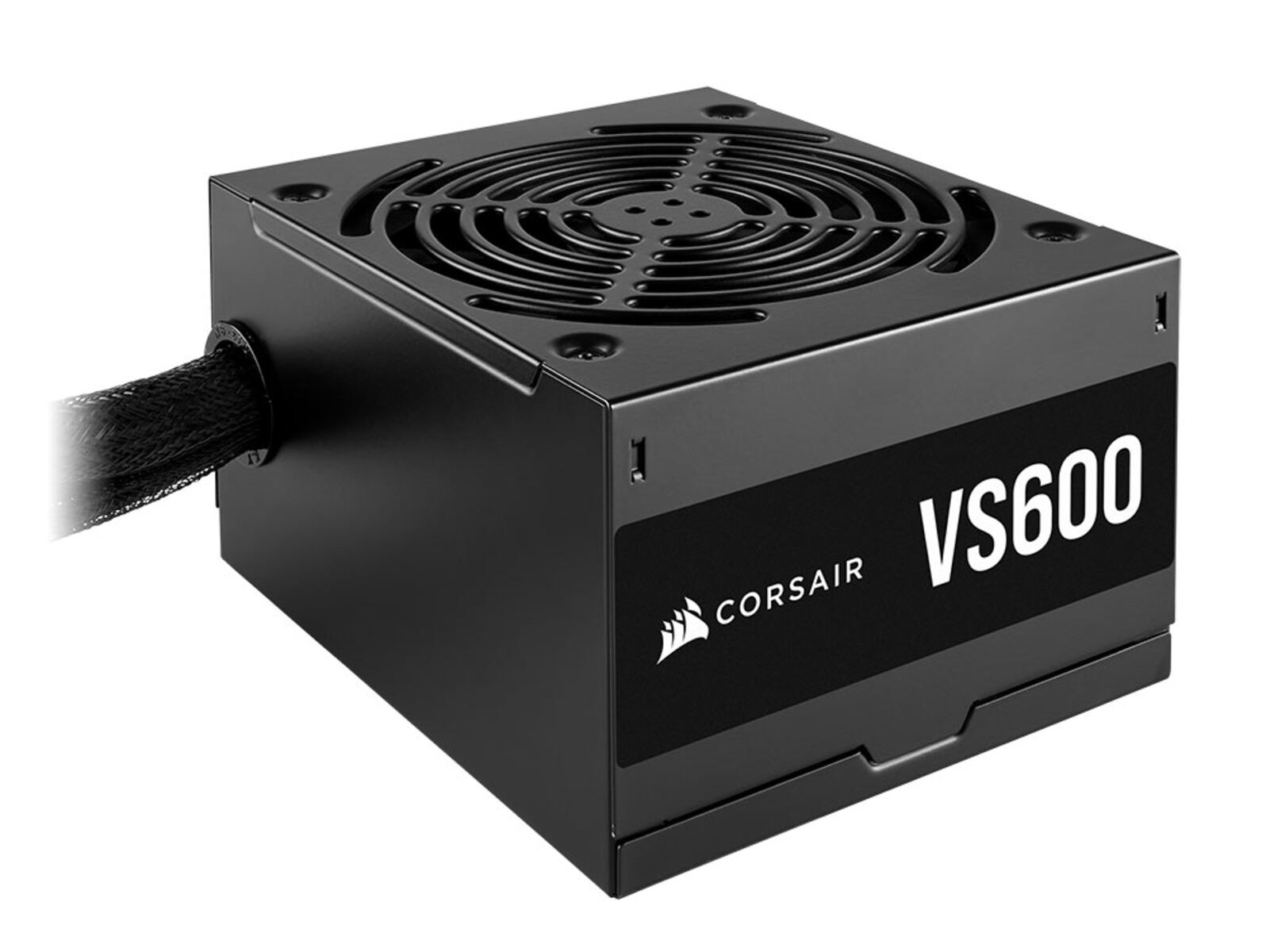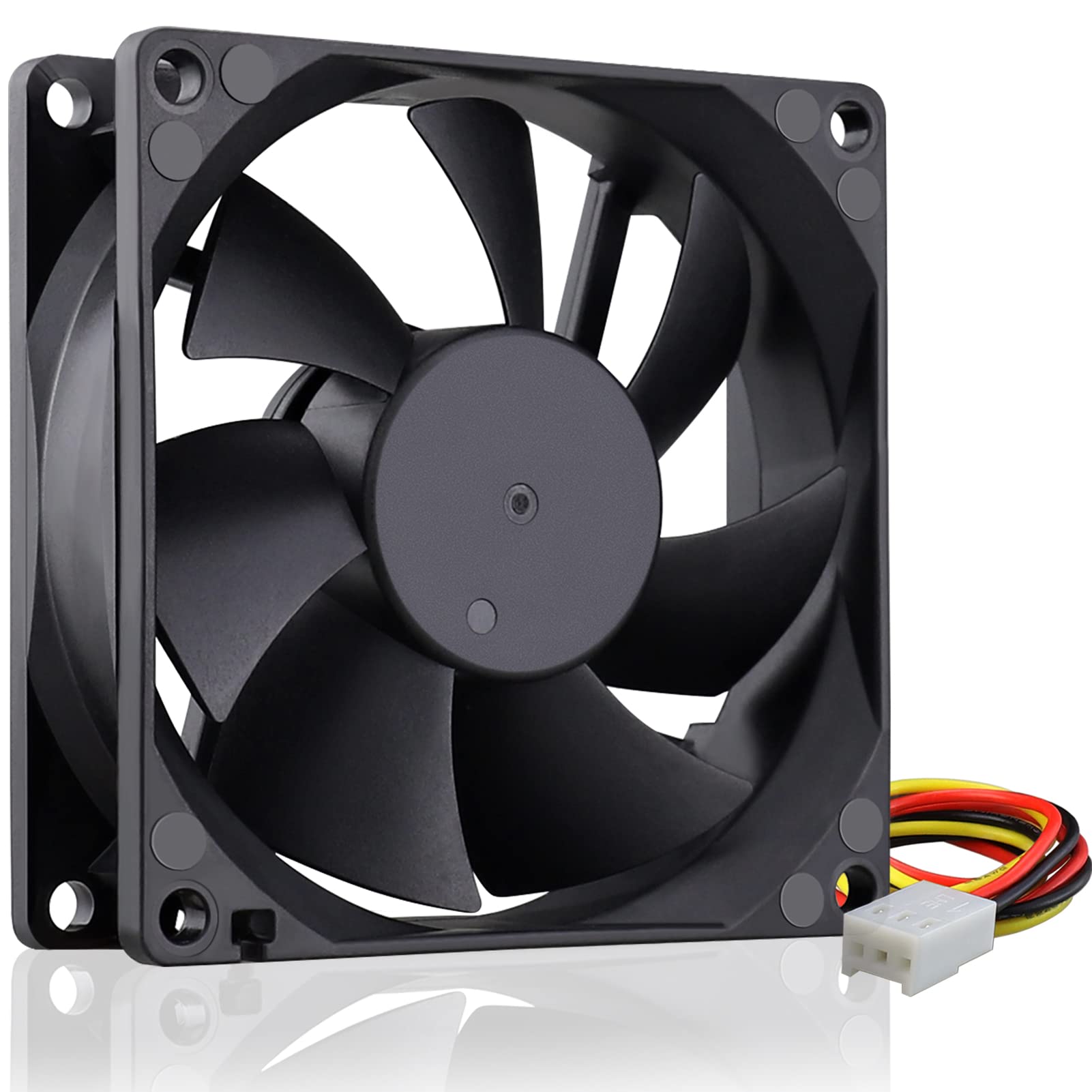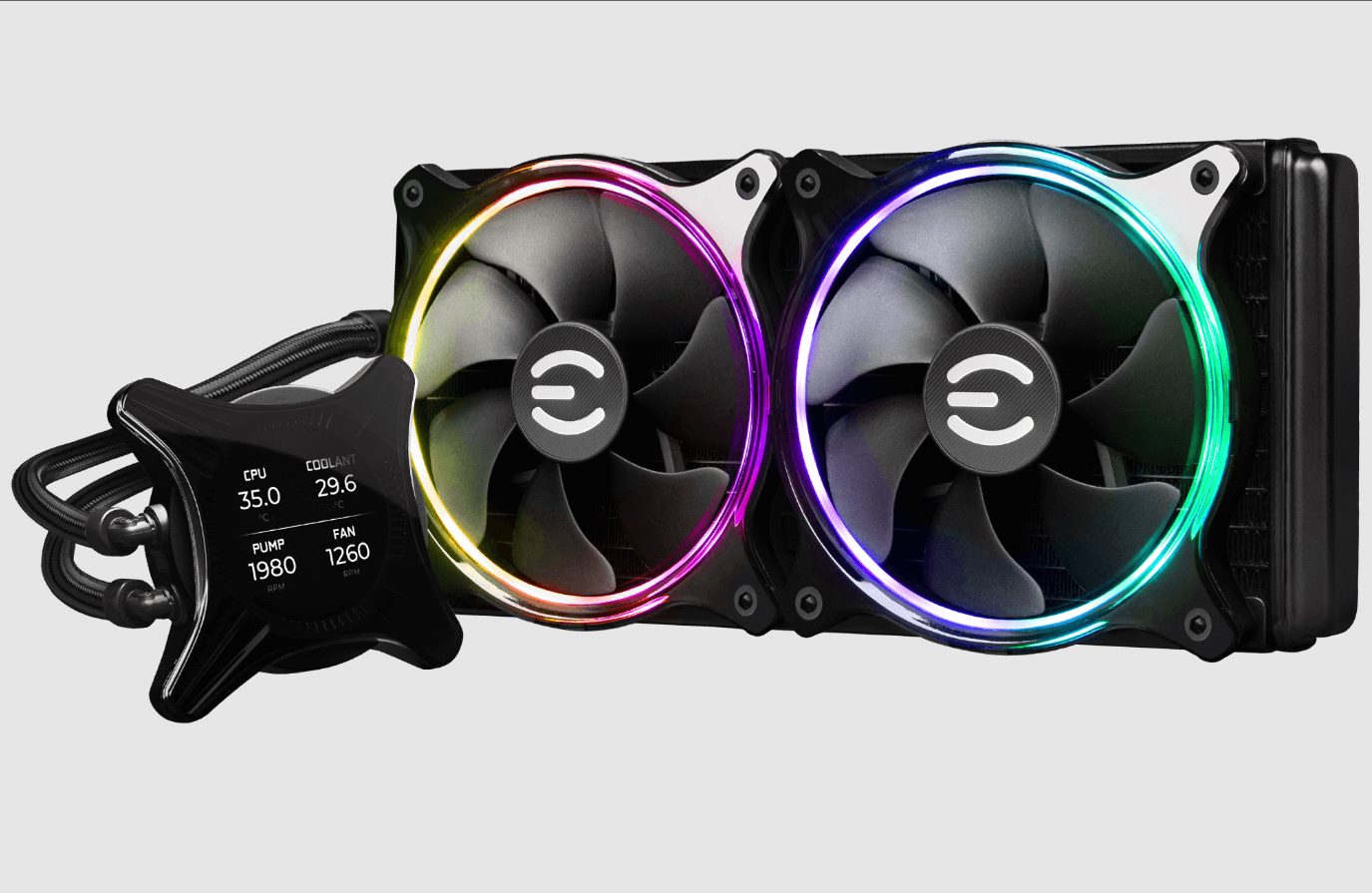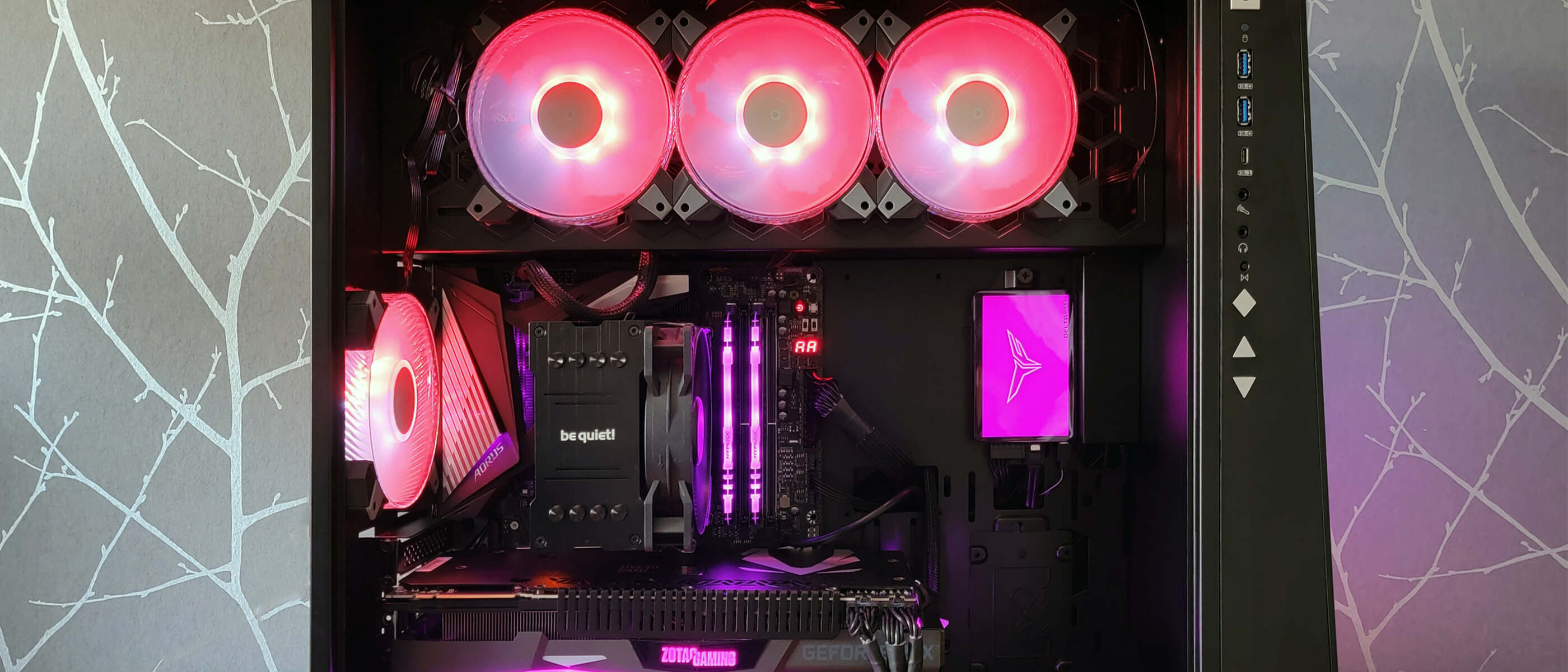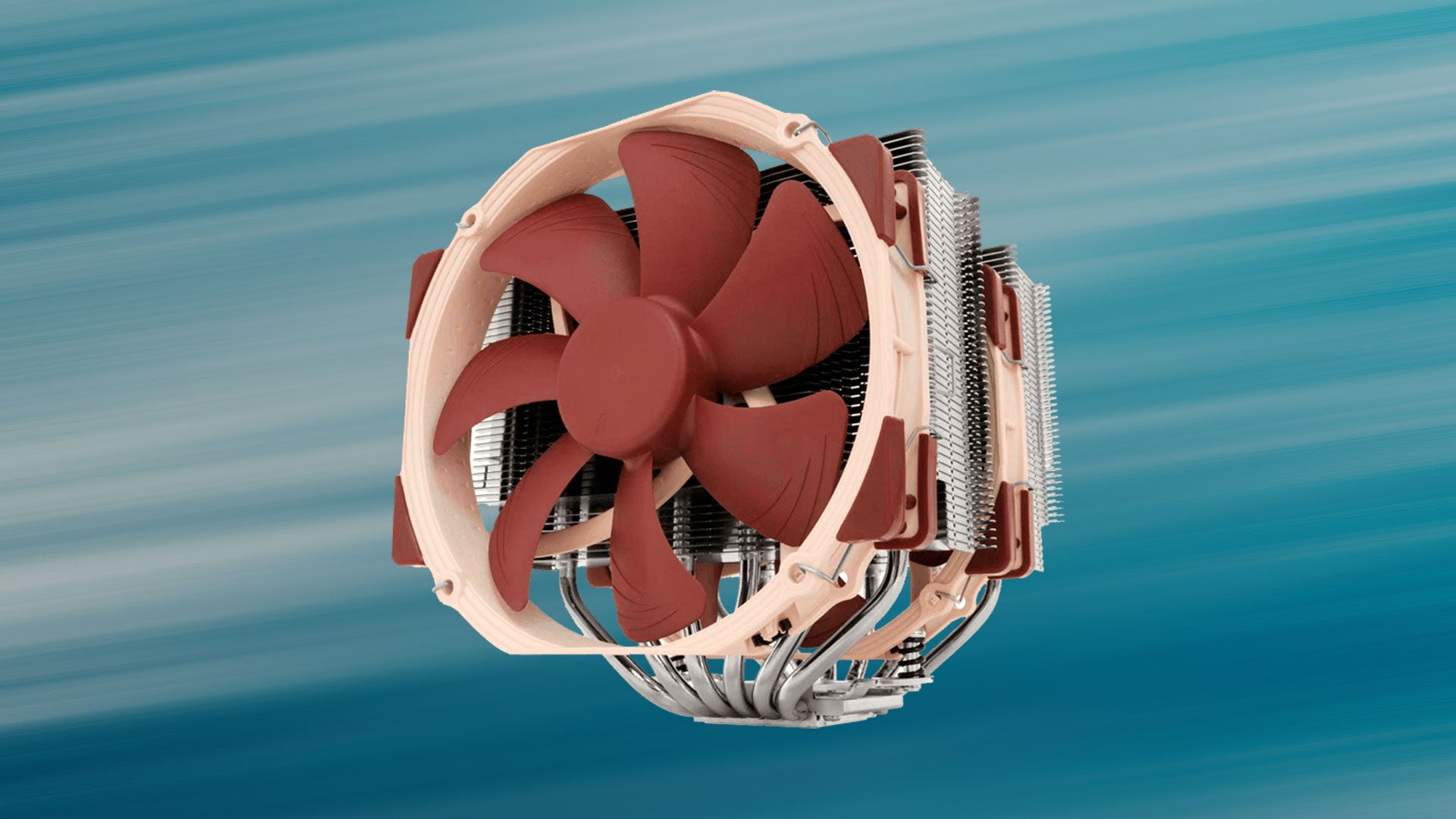Introduction
Have you ever noticed that loud whirring noise coming from your PC? It can be quite annoying, especially when you’re trying to concentrate or enjoy a quiet environment. But why is your PC fan so loud? Is it something to worry about?
PC fans are an essential component of your computer’s cooling system. Their primary purpose is to keep the internal components cool by circulating air and dissipating heat. However, over time, these fans can start making excessive noise, which can be an indication of an underlying issue.
In this article, we will delve into the reasons why PC fans can be loud and offer solutions to help alleviate the problem. But first, let’s take a closer look at the workings of PC fans and their importance in maintaining your computer’s performance and lifespan.
PC fans are typically located inside the computer’s case, near the processor, graphics card, and power supply unit (PSU). They come in various sizes and configurations, including exhaust fans, intake fans, and radiator fans. These fans work in tandem with heatsinks and thermal paste to dissipate heat generated by the components.
The fan noise is primarily caused by the rotation of the fan blades, which can create vibrations that resonate throughout the computer case. The noise level varies depending on factors such as fan speed, fan size, and the surrounding environment.
Now, let’s explore the main reasons why your PC fan might be making so much noise.
Understanding PC Fans
Before we delve into the reasons behind loud PC fans, it’s essential to understand how they work. PC fans play a crucial role in maintaining the overall temperature and performance of your computer system. Let’s take a closer look at their functioning.
PC fans are designed to move air through your computer’s case, helping to dissipate heat generated by the internal components. They achieve this by spinning their blades, which creates airflow that carries away the excess heat. As the blades rotate, they draw in cool air from outside the case and push out the heated air.
These fans are powered by electricity and are connected to the motherboard or other fan control devices. The fan speed and performance can be adjusted using either pre-set profiles or manual configurations. Some PCs even come with software that allows users to customize fan settings to suit their preferences.
The size and type of PC fan can vary, depending on the specific requirements of your computer system. The most common types include intake fans, exhaust fans, and radiator fans. Intake fans draw in fresh air from outside the case, while exhaust fans expel the heated air. Radiator fans are specifically designed to cool liquid cooling systems.
PC fans are measured in terms of their size, which is typically expressed in millimeters (mm). The size of the fan can affect its performance and noise level. Larger fans generally produce less noise as they can move the same amount of air at a lower speed compared to smaller fans.
Now that we have a basic understanding of PC fans, let’s explore the reasons why they can become loud and bothersome.
Reasons Why PC Fans are Loud
If you’ve noticed that your PC fan is louder than usual, several factors could be contributing to the excessive noise. Let’s take a look at some common reasons why PC fans become loud and bothersome:
1. Dust Buildup: Over time, dust and debris can accumulate on the fan blades and hinder their smooth rotation. This buildup disrupts the airflow, causing the fan to work harder and produce more noise. Regularly cleaning your computer and its components can help prevent excessive dust buildup.
2. Fan Speed: PC fans have adjustable speed settings, allowing users to control the level of cooling required. When set at higher speeds, fans can generate more noise. If your PC fan is set to run at maximum speed constantly, it may be unnecessarily loud. Adjusting the fan speed through software or BIOS settings can help reduce noise levels.
3. Faulty Fan: A faulty fan may produce excessive noise due to issues like bearing wear, misalignment, or damaged fan blades. If your fan is making strange noises or rattling, it may be time to replace it with a new one to restore quiet operation.
4. Overheating: When your computer’s components generate excessive heat, the fan works harder to cool them down. If your PC is consistently overheating, the fan may have to operate at higher speeds for prolonged periods, leading to increased noise. Proper ventilation and cooling of your computer system can help prevent overheating issues.
5. Heavy Workload: Intensive tasks like gaming, video editing, or running resource-demanding applications can put a significant load on your computer’s components. As a result, the fan may have to operate at high speeds to keep the system cool. This increased fan activity can result in louder noise levels.
Now that we’ve explored the reasons behind loud PC fans, it’s essential to address these issues to reduce noise levels and maintain optimal performance. In the following section, we will discuss some effective solutions to help reduce PC fan noise.
Dust Buildup
Dust buildup is one of the most common culprits behind loud PC fans. Over time, dust particles can accumulate on the fan blades, obstructing their smooth rotation. This buildup disrupts the airflow and forces the fan to work harder to maintain proper cooling, resulting in increased noise levels.
Regularly cleaning your computer and its components can help prevent excessive dust buildup and keep your PC running smoothly and quietly. Here are some steps you can take to reduce dust accumulation:
Cleaning the Exterior: Start by turning off your PC and unplugging it from the power source. Use a soft cloth or a can of compressed air to gently wipe away the dust from the exterior surfaces, such as the computer case, vents, and fan grills. Avoid using abrasive materials or harsh chemicals that could damage the components.
Cleaning the Interior: To clean the interior of your PC, open the case following the manufacturer’s guidelines. Take caution to prevent any static electricity discharge by grounding yourself before touching any components. Use compressed air to blow away the dust from the fan blades, heatsinks, and other areas where dust tends to accumulate. Ensure that the PC is completely powered off and components are cool before performing any cleaning.
Replacing Dust Filters: Some computer cases come equipped with dust filters that help prevent dust from entering the system. These filters can be easily removed and cleaned or replaced regularly to maintain optimal airflow and reduce dust buildup. Check your computer case documentation for instructions on how to remove and clean the dust filters.
Maintain a Clean Environment: If you often find dust is a recurring issue, consider keeping your computer in a clean and dust-free environment. Avoid placing your PC on the floor or in locations prone to excessive dust, such as near windows or in high-traffic areas. Regularly cleaning the room and using an air purifier can also help minimize the amount of dust in the surrounding area.
By regularly cleaning your PC and taking preventive measures to reduce dust buildup, you can help minimize fan noise and maintain optimal cooling performance. However, dust buildup is not the only reason for loud PC fans. In the following sections, we will explore other factors that could contribute to excessive fan noise and discuss effective solutions to address them.
Fan Speed
The speed at which your PC fan operates can directly impact the level of noise it produces. When your fan is set to run at higher speeds, it can generate more noise due to the increased airflow and the rapid rotation of the fan blades. Adjusting the fan speed can help reduce noise levels without compromising on the cooling performance of your computer system.
Here are some methods to adjust and optimize the fan speed to achieve a balance between cooling and noise reduction:
1. BIOS Settings: Many motherboards offer BIOS settings that allow you to customize fan speed profiles. By accessing the BIOS menu, you can adjust the fan speed control settings to regulate the RPM (rotations per minute) based on temperature thresholds. This way, the fan will only run faster when the system needs additional cooling, reducing unnecessary noise during idle or low-temperature conditions.
2. Software-based Fan Control: Some computer systems come with software utilities provided by the manufacturer that enable you to control fan speed. These programs often provide graphical interfaces where you can adjust fan speed curves manually or select predefined profiles based on system usage. By finding the right balance between cooling and noise levels, you can optimize the fan speed for your specific needs.
3. Third-Party Fan Control Software: If your computer does not provide built-in fan control software, there are various third-party applications available online that can help you manage fan speeds. These tools often offer more advanced features and flexibility in customizing fan speed profiles. Before using third-party software, make sure it is compatible with your motherboard and follow the instructions provided by the software developer.
4. Fan Speed Reducers: Another option to reduce fan speed and subsequent noise is to use fan speed reducers. These are small adapters that limit the voltage supplied to the fan motor, effectively reducing its speed. However, it’s important to note that reducing the fan speed too much may compromise the cooling performance of your system, so it’s crucial to monitor temperatures periodically to ensure they remain within safe limits.
By adjusting the fan speed through BIOS settings, software utilities, or using fan speed reducers, you can effectively reduce fan noise without sacrificing the cooling capabilities of your PC. Experiment with different settings and monitor temperatures to find the optimal balance for your specific system configuration.
In the next sections, we will dive into other potential reasons for loud PC fans and explore solutions to address them.
Faulty Fan
If your PC fan is making unusual noises or generating excessive noise, it could be a sign of a faulty fan. Various factors can contribute to fan malfunctions, including bearing wear, misalignment, or damaged fan blades. Dealing with a faulty fan is essential to restore quiet operation and maintain proper cooling for your computer system.
Here are some steps you can take to address a faulty fan:
1. Identify the Problematic Fan: Start by identifying which fan is causing the noise. Depending on your computer’s configuration, there may be multiple fans, such as CPU fans, case fans, or graphics card fans. Listen closely to locate the specific fan that is producing the excessive noise.
2. Inspect for Obstructions: In some cases, the noise may be caused by an obstruction, such as a loose wire or cable touching the fan blades. Open your PC and visually inspect the fan for any foreign objects or tangled cables that may be interfering with its operation. Carefully remove the obstruction if you find any, ensuring not to damage the fan blades or other components.
3. Lubricate the Fan Bearings: If the noise is due to bearing wear, you can try lubricating the fan bearings to reduce friction and noise. Use a small amount of lubricant specifically designed for computer fans, applying it to the center of the fan’s hub or where the fan shaft connects to the motor. Be cautious not to over-lubricate as it might damage the fan. Consult the fan manufacturer’s instructions for proper lubrication techniques.
4. Replace the Fan: If the fan noise persists even after removing obstructions or lubricating the bearings, it is likely that the fan itself is faulty and needs to be replaced. Purchase a compatible replacement fan from a reliable retailer or directly from the manufacturer. Before replacing the fan, refer to your computer’s documentation or online resources for instructions on how to safely remove and install the new fan.
5. Seek Professional Assistance: If you are uncomfortable or uncertain about addressing a faulty fan yourself, it is advisable to seek help from a professional technician. They have the experience and knowledge to diagnose and resolve fan-related issues, ensuring your computer runs smoothly and quietly.
By identifying and addressing faulty fans promptly, you can eliminate excessive noise and maintain efficient cooling for your PC. Remember to handle components with care, follow proper installation procedures, and consult professional assistance if needed.
In the following sections, we will continue exploring other potential causes of loud PC fans and provide solutions to mitigate the noise.
Overheating
Overheating is a common issue that can contribute to loud PC fans. When the internal components of your computer generate excessive heat, the fan has to work harder to cool them down, resulting in increased noise levels. It’s crucial to address overheating to prevent potential damage to your system and maintain optimal performance.
Here are some factors that can cause overheating and steps you can take to mitigate the problem:
1. Insufficient Airflow: Poor ventilation within your computer case can restrict the airflow, leading to overheating. Make sure that the computer’s vents and fan grills are not blocked by dust, cables, or other objects. Additionally, ensure that the case fans are properly installed and working efficiently to maximize airflow.
2. Improper Placement: Placing your PC in a location with limited air circulation can contribute to overheating. Avoid confining your computer in small, enclosed spaces and ensure that there is adequate space around it for proper ventilation. Avoid placing your PC near heat sources like radiators or direct sunlight, which can raise ambient temperatures and exacerbate overheating issues.
3. Faulty Thermal Paste Application: Thermal paste is used to improve heat transfer between a component, such as the CPU or GPU, and its heatsink. If the thermal paste has degraded or wasn’t correctly applied during installation, it can impede heat dissipation and result in overheating. Reapplying thermal paste following manufacturer guidelines can help address this issue.
4. Inadequate Cooling System: If your computer system is running resource-intensive tasks or has high-performance components, it may require additional cooling. Consider upgrading or adding extra fans to improve airflow and enhance the cooling capacity. Installing aftermarket CPU coolers or liquid cooling solutions can also help dissipate heat more effectively.
5. Monitor and Manage Temperature: Regularly monitor your computer’s temperature using software utilities or BIOS monitoring tools. Ensure that the temperatures are within acceptable ranges for your components. If you notice consistently high temperatures, consider adjusting fan speeds, repositioning case fans, or upgrading cooling solutions to maintain optimal performance.
By maintaining adequate airflow, ensuring proper placement, checking and reapplying thermal paste, upgrading cooling systems, and monitoring temperature levels, you can effectively address overheating issues and reduce fan noise. Consistently monitoring and managing your computer’s temperature will help extend the lifespan of your components while keeping noise levels at a minimum.
In the next sections, we will explore additional solutions to reduce PC fan noise and optimize the overall performance of your computer system.
Heavy Workload
If you notice that your PC fans become significantly louder during intensive tasks, such as gaming, video editing, or running resource-demanding applications, it could be due to the heavy workload on your computer’s components. These tasks put a significant load on the CPU and GPU, generating more heat and requiring the fans to work harder to maintain optimal operating temperatures.
While it’s natural for the fans to spin faster and produce more noise during such scenarios, there are steps you can take to minimize the impact on noise levels:
1. Optimize Task Scheduling: Consider managing your workload by scheduling resource-intensive tasks during periods when noise levels are less of a concern. For example, plan your gaming or video editing sessions when you won’t disturb others or when ambient noise can mask the fan noise. This way, you can maximize performance while minimizing noise-related disruptions.
2. Use Performance Profiles: Many systems provide pre-set performance profiles that allow you to customize power settings based on your requirements. By choosing a balanced or power-saving profile for regular tasks and switching to a high-performance profile only when needed, you can avoid unnecessary fan noise during light workloads.
3. Upgrade Hardware Components: If you frequently engage in activities that put a strain on your computer, consider upgrading your hardware components. A more powerful CPU or GPU can handle heavy workloads more efficiently, resulting in reduced heat generation and less noise from the fans. Before upgrading, ensure that your system supports the new components and that proper cooling solutions are in place.
4. Improve Case Airflow: Enhancing the overall airflow and cooling within your computer case can help mitigate fan noise. Ensure that the case fans are positioned strategically to optimize airflow and direct hot air out of the case effectively. Adding additional case fans or upgrading to more efficient ones can aid in better heat dissipation and noise reduction.
5. Monitor and Manage Temperatures: Continuous monitoring of component temperatures during heavy workloads is crucial to prevent overheating and excessive fan noise. Utilize software utilities or BIOS monitoring tools to keep an eye on temperature levels. If temperatures rise to concerning levels, consider adjusting fan speeds or implementing additional cooling solutions to maintain optimal performance and silence.
By implementing these strategies, you can strike a balance between performance and noise reduction during heavy workloads. Optimizing task scheduling, using performance profiles, upgrading hardware, improving case airflow, and monitoring temperatures will help you maintain a quieter computing experience while maximizing productivity.
In the next section, we will discuss additional solutions to reduce fan noise and optimize the overall performance of your computer system.
Solutions to Reduce PC Fan Noise
Loud PC fan noise can be bothersome, but the good news is that there are several solutions available to help reduce the noise while maintaining optimal cooling for your computer system. Let’s explore some effective strategies:
1. Clean Your PC: Regularly clean your computer and its components to prevent dust buildup. Dust can obstruct airflow and force the fan to work harder, resulting in increased noise. Use compressed air or a soft cloth to remove dust from fan blades, heatsinks, and other areas where dust tends to accumulate.
2. Adjust Fan Speed: Control fan speeds through BIOS settings, software utilities, or third-party applications. By regulating the fan speed based on system requirements, you can find a balance between cooling and noise reduction. Optimize fan curves to ensure they operate at higher speeds only when necessary.
3. Replace Faulty Fan: If you have a fan that is making unusual noise despite cleaning and adjustments, it may be time to replace it. Purchase a compatible fan from a reliable manufacturer or retailer and follow the installation instructions specific to your computer model.
4. Improve PC Cooling: Enhance the overall cooling capacity of your computer system to reduce the workload on fans. Add additional case fans or upgrade to more efficient ones. Consider installing aftermarket CPU coolers or liquid cooling solutions for better heat dissipation. Ensure proper ventilation and keep air circulation within the case unrestricted.
5. Optimize Workload: Schedule resource-intensive tasks during periods when noise levels are less of a concern. Utilize performance profiles to balance power settings and prioritize noise reduction during light workloads. Upgrade hardware components to handle heavy workloads more efficiently and generate less heat.
6. Use Soundproofing Materials: Consider using soundproofing materials inside your computer case or around the area where your PC is located. These materials help absorb noise and reduce its transmission, resulting in a quieter environment. However, ensure that the use of soundproofing materials does not hinder proper airflow and cooling.
7. Monitor and Manage Temperatures: Regularly monitor component temperatures to prevent overheating and excessive fan noise. Use software utilities or BIOS monitoring tools to keep track of temperature levels. Adjust fan speeds or upgrade cooling solutions if temperatures consistently rise to concerning levels.
Implementing these solutions can significantly reduce PC fan noise and provide a more peaceful computing experience. Choose the strategies that are most relevant to your specific situation and system configuration.
Keep in mind that the optimal balance between noise reduction and cooling performance may vary based on individual preferences and requirements. Experiment with different approaches until you find the one that suits your needs.
In the concluding section, we will summarize the main points discussed and emphasize the importance of addressing PC fan noise for overall system performance and user comfort.
Clean Your PC
Regularly cleaning your PC is one of the most effective ways to reduce fan noise and maintain optimal cooling performance. Dust buildup on fan blades and other components can hinder airflow, forcing the fans to work harder and produce more noise. Here’s how you can keep your PC clean:
1. Power Off and Unplug: Before starting any cleaning, remember to turn off your PC and unplug it from the power source. This ensures your safety and prevents any electrical mishaps during the cleaning process.
2. Exterior Cleaning: Use a soft cloth or compressed air to gently wipe away dust from the exterior surfaces of your computer, including the case, vents, and fan grills. Avoid using abrasive materials or harsh chemicals that could damage the components.
3. Interior Cleaning: To clean the interior of your PC, open the case following the manufacturer’s guidelines. Ensure that you are grounded to prevent any static electricity discharge that could potentially damage the components. Use compressed air to blow away dust from fan blades, heatsinks, and other areas where dust tends to accumulate. Be cautious not to damage any delicate components, and wait until the PC is completely powered off and components have cooled down before performing any cleaning.
4. Dust Filters: Some computer cases come equipped with dust filters that help prevent dust from entering the system. Periodically remove and clean these filters according to the manufacturer’s instructions. This will improve airflow and reduce dust buildup on components.
5. Maintain a Clean Environment: Minimize dust accumulation by keeping your PC in a clean and dust-free environment. Avoid placing your PC on the floor or in areas prone to excessive dust, such as near open windows or in high-traffic locations. Regularly clean the room where your computer is located and consider using an air purifier to further minimize dust particles in the air.
Proper cleaning and maintenance of your PC can go a long way in reducing fan noise and ensuring efficient cooling. By removing dust and debris, you allow the fans to operate more effectively, resulting in quieter operation and improved overall performance.
Make a habit of cleaning your PC at regular intervals, preferably every 3 to 6 months, or more frequently if you notice excessive dust buildup. Remember to follow safety precautions and consult the manufacturer’s guidelines or seek professional help if you are unsure about any cleaning procedures.
Now that we’ve covered the importance of cleaning your PC, let’s explore other solutions to further reduce fan noise and optimize your computer’s performance.
Adjust Fan Speed
Controlling the fan speed is a practical solution to reduce PC fan noise while maintaining adequate cooling for your system. By adjusting the fan speed, you can find a balance between noise reduction and efficient cooling. Here are some methods to help you adjust the fan speed:
1. BIOS Settings: Many motherboards offer BIOS settings that allow you to customize fan speed profiles. Access the BIOS menu during startup (usually by pressing a specific key, such as Del or F2) and locate the fan control settings. From here, you can adjust the fan speed control modes and temperature thresholds. Set the fan speed to be more aggressive at higher temperatures and lower at lower temperatures, finding the appropriate balance for your needs.
2. Software-based Fan Control: Some computers come with dedicated software utilities provided by the manufacturer to control fan speed. These programs often provide interactive user interfaces where you can adjust fan speed curves manually or select predefined profiles based on system usage. Check your computer manufacturer’s website for any available software that allows you to control the fan speed.
3. Third-Party Fan Control Software: In cases where your computer does not provide built-in fan control software, various third-party applications are available that allow you to adjust fan speed. These programs often offer advanced features and flexibility in customizing fan speed profiles. However, be sure to choose a reliable and compatible software solution, and carefully follow the provided instructions to avoid any undesirable effects on your system.
4. Fan Speed Reducers: Some fans may come with built-in speed control mechanisms, such as included low-noise adapters or resistors. These accessories reduce the voltage supplied to the fan motor, thereby reducing the fan speed and noise output. However, be cautious when using fan speed reducers, as excessively lowering the fan speed can lead to insufficient cooling. Monitor your system temperatures to ensure they remain within safe limits.
Experiment with different fan speed settings to find the optimal balance between cooling performance and noise reduction. Gradually increase or decrease the fan speed while keeping an eye on your system’s temperatures to ensure they remain within safe operating ranges.
It’s important to note that lowering the fan speed too much may lead to increased system temperatures, potentially impacting the stability and performance of your computer. Continuously monitor your system temperatures and adjust fan speeds accordingly to maintain a balance between noise reduction and cooling efficiency.
In the following sections, we will explore other solutions to further minimize PC fan noise and optimize the overall performance of your computer system.
Replace Faulty Fan
If you have tried cleaning your PC and adjusting the fan speed, but the fan noise persists, it may be an indication of a faulty fan. Fans can develop various issues over time, such as bearing wear, misalignment, or damaged blades, leading to excessive noise. In such cases, replacing the faulty fan is necessary to restore quiet operation and maintain proper cooling for your computer system.
Here are the steps to consider when replacing a faulty fan:
1. Identify the Problematic Fan: Start by identifying which fan is causing the noise. Depending on your computer’s configuration, you may have a CPU fan, case fans, or fans dedicated to cooling specific components like the graphics card. Listen carefully to locate the specific fan that is producing the excessive noise.
2. Find a Compatible Replacement: Once you have identified the faulty fan, verify its specifications and find a compatible replacement. Check the model number and size of the fan to ensure you purchase the right one. Refer to your computer’s documentation or manufacturer’s website for information on compatible fans or consider seeking guidance from a professional if you are uncertain.
3. Remove the Fan: Depending on the fan’s location, removing it may vary in complexity. In most cases, you will need to unscrew the fan from its mounting points. Be gentle and take care not to damage any other components while removing the faulty fan. Refer to the manufacturer’s guidelines or seek professional assistance if you are unsure about the removal process.
4. Install the Replacement Fan: Once you have removed the faulty fan, carefully install the replacement. Align the screw holes with the mounting points and secure the fan in place. Ensure that the fan is properly connected to the corresponding fan header on the motherboard, ensuring a stable power connection.
5. Test and Monitor: After installing the replacement fan, power on your computer and listen for any abnormal noises. Monitor the fan’s performance and ensure that it is operating smoothly. Additionally, keep an eye on your system’s temperatures to verify that the replacement fan is effectively cooling the components.
Replacing a faulty fan is a straightforward and effective solution to reduce fan noise caused by mechanical issues. It is important to follow proper installation procedures and refer to the manufacturer’s guidelines specific to your computer model. If you are unsure or uncomfortable performing the replacement yourself, seek assistance from a professional technician.
By replacing faulty fans, you can restore quiet operation and maintain efficient cooling for your computer system, allowing you to work or enjoy media in a more peaceful environment.
In the following sections, we will explore additional solutions to further mitigate PC fan noise and optimize the overall performance of your computer system.
Improve PC Cooling
To reduce fan noise and enhance the overall cooling performance of your PC, it’s important to focus on improving the cooling system. By optimizing airflow and heat dissipation, you can minimize the workload on your fans and maintain lower noise levels. Here are some effective strategies to improve PC cooling:
1. Additional Case Fans: Consider adding more case fans to improve airflow within your computer case. Strategically place them to ensure optimal circulation and effective heat evacuation. To maintain a balance between noise reduction and cooling performance, choose fans with lower noise levels or invest in high-quality silent fans.
2. Fan Placement and Configuration: Properly position your case fans to optimize airflow. Place intake fans at the front or side of the case, drawing in cool air, while exhaust fans should be located at the back or top, expelling hot air. Additionally, ensure that cables and components do not obstruct the airflow and cause unnecessary turbulence within the case.
3. Aftermarket CPU Coolers: Upgrading your CPU cooler can have a significant impact on cooling efficiency and noise reduction. Aftermarket coolers typically offer larger heatsinks and more effective heat dissipation capabilities. Select a reputable brand and choose a CPU cooler that matches the thermal requirements of your processor.
4. Liquid CPU Cooling: Consider a liquid cooling solution, such as an all-in-one (AIO) liquid cooler, for your CPU. This type of cooling system utilizes a pump, radiator, and liquid coolant to efficiently dissipate heat from the CPU. Liquid cooling can often provide superior cooling performance and quieter operation compared to traditional air cooling methods.
5. Cable Management: Organize and manage your cables effectively to improve airflow within the case. Neatly arranging cables using cable ties or Velcro straps helps prevent obstruction of fans and ensures efficient airflow. Proper cable management minimizes the accumulation of dust and reduces the risk of tangled cables interfering with fan operation.
6. Thermal Paste Application: Apply a thin, even layer of thermal paste between your CPU and its heat sink. Thermal paste helps improve heat transfer and reduces the CPU’s operating temperature. Proper application of thermal paste ensures optimal heat dissipation and can help lower fan speeds and noise levels.
7. Monitor and Clean Components: Regularly monitor your PC’s components, such as heatsinks and graphics cards, for dust buildup. Use compressed air to remove dust and debris, ensuring unobstructed airflow and optimal cooling performance. Pay particular attention to the fins and blades of heatsinks, as they can accumulate dust and restrict airflow over time.
By implementing these strategies, you can significantly improve the cooling efficiency of your PC, leading to reduced fan noise and enhanced performance. Choose the solutions that are most suitable for your specific system configuration and requirements.
In the following sections, we will explore additional solutions to further minimize PC fan noise and optimize the overall performance of your computer system.
Optimize Workload
One often overlooked factor that can contribute to high fan noise is an excessive workload on your computer. Resource-intensive tasks, such as gaming, video editing, or running demanding applications, can put a significant load on your system, leading to increased heat generation and higher fan speeds. By optimizing your workload, you can reduce the strain on your components and minimize fan noise. Here are some strategies to help optimize your workload:
1. Task Scheduling: Consider managing your workload by scheduling resource-intensive tasks during periods when noise levels are less of a concern. Plan your gaming sessions or other demanding activities when you won’t disturb others, or when ambient noise can help mask the fan noise. This way, you can maximize performance while minimizing noise-related disruptions.
2. Performance Profiles: Many systems offer pre-set performance profiles that allow you to customize power settings based on your needs. By selecting a balanced or power-saving profile for regular tasks, and switching to a high-performance profile only when needed, you can avoid unnecessary fan noise during light workloads. These profiles adjust various system settings, including fan speed and CPU power modes, to provide an optimal balance between performance and noise reduction.
3. Hardware Upgrades: If you frequently engage in tasks that strain your computer, you may consider upgrading your hardware components. A more powerful CPU or GPU, paired with sufficient cooling solutions, can handle heavy workloads more efficiently. Upgrading your system with faster RAM or solid-state drives (SSDs) can also enhance overall performance, reducing the time and effort required for data-intensive tasks.
4. Software Optimizations: Regularly update your software applications, graphics drivers, and operating system to ensure they are optimized for the best performance. Additionally, consider closing unnecessary background processes and applications to minimize CPU usage, which can result in reduced heat generation and lower fan speeds.
5. Manage Virtualization: If you frequently use virtual machines, ensure that you allocate resources appropriately. Assign the necessary CPU cores, memory, and other resources to virtual machines without overloading your system. Running multiple heavily loaded virtual machines simultaneously can increase heat generation and fan speeds.
6. Gaming Optimizations: When gaming, adjust the in-game settings to a level that strikes a balance between performance and visual quality. Higher graphics settings can strain your system, requiring more power and generating more heat. Optimize settings to match your hardware capabilities and desired gaming experience while minimizing the load on your components.
By optimizing your workload and reducing the strain on your computer, you can effectively minimize fan noise and create a quieter computing environment. Adapt your computing habits to strike a balance between performance and noise reduction, ensuring a more enjoyable and peaceful experience.
In the following sections, we will explore additional solutions to further reduce PC fan noise and optimize the overall performance of your computer system.
Conclusion
Dealing with loud PC fan noise can be frustrating, but there are several effective solutions to reduce noise levels while maintaining optimal cooling for your computer system. By addressing the underlying causes of fan noise, you can create a quieter and more comfortable computing experience.
We discussed various reasons why PC fans can become loud, including dust buildup, fan speed settings, faulty fans, overheating, and heavy workloads. Taking steps to clean your PC, adjust fan speeds, replace faulty fans, improve PC cooling, and optimize your workload can help mitigate fan noise effectively.
Regularly cleaning your PC and its components prevents dust accumulation, ensuring proper airflow and reducing the workload on your fans. Adjusting fan speed settings through BIOS or software utilities allows you to find the right balance between cooling performance and noise reduction.
If you experience issues with faulty fans, replacing them with compatible replacements restores quiet operation. Improving PC cooling through additional case fans, aftermarket CPU coolers, or liquid cooling solutions enhances overall airflow and heat dissipation.
Optimizing your workload by scheduling tasks, using performance profiles, and upgrading hardware reduces strain on your components, minimizing heat generation and fan noise. These strategies, combined with proper cable management and thermal paste application, further contribute to noise reduction and optimal cooling.
Remember that finding the optimal balance between noise reduction and performance will depend on your specific preferences and system configuration. Continuously monitor temperatures and fan noise levels to ensure your system remains within safe operating limits.
By implementing these solutions and making adjustments based on your specific needs, you can significantly reduce PC fan noise and enjoy a quieter computing environment. Maintaining proper cooling not only improves the overall performance and lifespan of your computer system but also enhances your productivity and overall user experience.
Now that you are equipped with the knowledge and solutions to tackle PC fan noise, take action to optimize your system’s cooling and create a more pleasant and peaceful computing experience.







